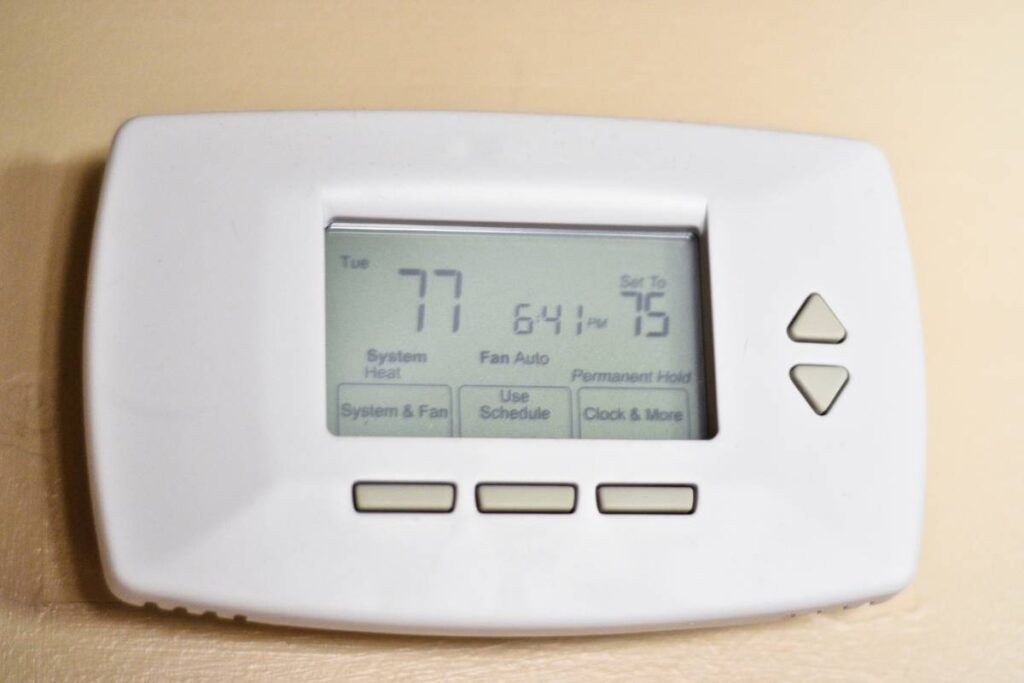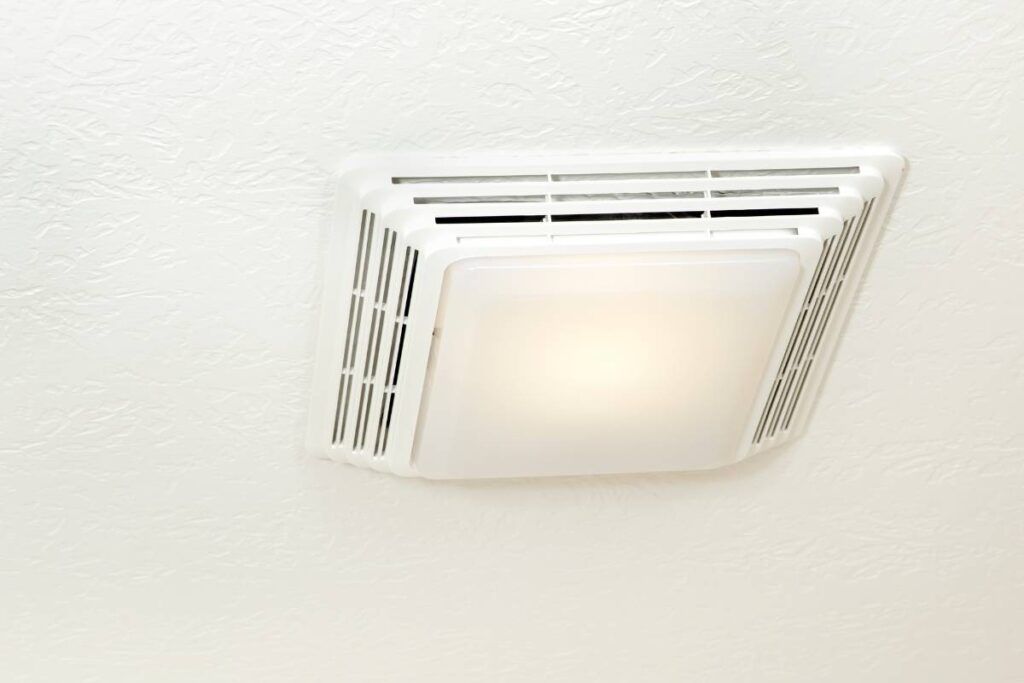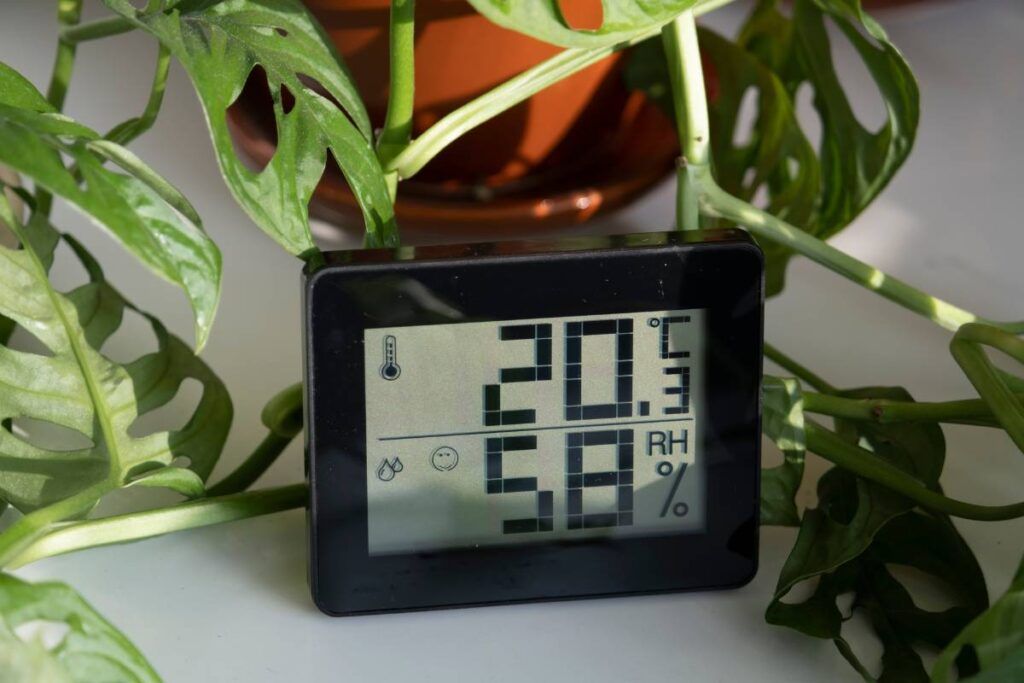We enjoy it when the temperature of our rooms is comfortable. But sometimes, a few rooms may feel perfect, but the others will be either too hot or too cold. You need to find the cause behind such an imbalance so that all rooms feel even.
Temperature differences between rooms could be due to poor insulation, too many open doors and windows, problems in the HVAC system, and closed vents. To solve it, seal the windows and doors, add a programmable thermostat, install an HVAC zoning system, or add a ceiling fan.
This guide will explain the different reasons behind the room temperature variations and ways to fix the problem. You must call a local HVAC professional for help if these solutions don’t work.

Check out our list of top-handpicked products for all your electrical, appliance, and HVAC system needs to keep your home running smoothly.
This post includes some affiliate links.What is a temperature variation?
A temperature variation is a situation where the different rooms of your house will have two or more varying temperatures.
One of your rooms may feel very comfortable, but a few others will feel either very hot or cold.
In the HVAC term, it is called temperature differential.
According to the HVAC, the temperature differential is the temperature dissimilarity between the inside and outside of the house.
A temperature difference can occur due to various reasons.
So, we must look for the real cause and solve it soon.
Why do different rooms in the same house have different temperatures?
Several reasons could cause the temperature to vary between the rooms of the same house.
Let’s have a close look at some of the most common reasons:
Multiple floors

When the hot air rises, the cold air falls.
That is why the rooms in the upstairs feel hotter in summer than the basement or first floor.
The hot air keeps climbing and gets trapped upstairs.
Similarly, the upstairs will feel warmer in the winter than the first floor and the basement.
Distance from the HVAC system or single thermostat monitoring a multi-level house
If your house is two-story, you will find a 10-degree temperature difference between the first and second floors.
The heat will rise from the lower floor to the higher floor, making the lower floor cooler than the upper one.
The distance between the HVAC system and the room can affect the temperature.
Suppose you have only one thermostat to regulate the temperature for two stories. In that case, the rooms far away from the thermostat will always remain under-conditioned.
Rooms close to the HVAC system will have better airflow than those staying away from the system.
Poor return airflow

Large houses need more air returns.
So, the cool and warm airflow cannot enter the house and fails to circulate all over the house through the system.
Due to the lack of enough airflow, the system too cannot perform properly.
So, some of your rooms may have a pleasant temperature, but others won’t have it, thus the temperature variations.
A certified HVAC expert can help you determine the amount of return air and what to do about it.
Wrong unit size
A wrong unit size cannot properly regulate the temperature of all the rooms.
A smaller unit cannot provide enough air throughout the house.
As a result, the rooms away from the unit won’t have proper airflow.
Also, a bigger unit is not always the solution to less airflow.
If you have a very large HVAC system, it may shut off quickly without allowing enough cool or warm air to reach all the levels and rooms.
An improper HVAC size causes improper airflow between the rooms and floors, stuffy air and odors, and inconsistent temperatures in your house.
The wrong size will cause mistakes inside your system, which makes it run longer and work harder to cover up the flaws.
It can add additional wear and tear and increase your bills.
It also encourages dirt, contaminants, and mold growth inside the system.

Window or door leaks
It can be a serious problem.
You will have a proper heating and cooling system, but the cold or hot air can enter your rooms through the drafty and poorly sealed doors and windows.
As a result, the rooms with more windows will have a different temperature than those with fewer windows and doors.
With poor sealings, the heating and cooling will not stay inside your rooms.
Since the heating and cooling system will not work well in a poorly insulated room, you will lose a lot of energy bills.
You can have a home energy audit to know which areas of your house lose energy so that you can make the adjustments.
Poor insulation

The poor insulation on your house’s thin walls can lower your house’s temperature.
Suppose some rooms have weak insulation while others are still in good condition.
In that case, those rooms with inadequate insulation will be colder than the others.
As a result, there will be a huge difference in the temperature.
If your room does not retain heat, you won’t be able to manage the energy bills because you may have to run the HVAC unit over time.
The heating system will constantly fight and try to warm up all the rooms.
According to the US Department of Energy, only 20% of the houses made before 1980 are properly insulated.
Dirty air filters in the furnace
According to the Diamond Certified Organization, a furnace with clogged or dirty air filters will be the reason behind the furnace’s failure.
Dirty air filters restrict enough airflow.
As a result, some of your rooms won’t have the same temperature as others.
Air filters can build up dirt and debris over time and prevent the airflow from forcing your furnace to spread air.
It will work harder to force out the air, thus consuming more power.
Dirty air filters force the air handler to fight against the blockage in the airflow.
These inefficiencies can strain the heating system and increase your electricity bills.
Sometimes, the reduced airflow forces the system to shut off automatically.
Air filters clogged with dust and debris will circulate dirty air inside your house, leading to chronic allergies.
Closed vents

Sometimes, the vents remain closed or clogged, or there is a disconnection.
Before you try troubleshooting the temperature variations, consider checking the vents.
Furniture or other things can block the vent and prevent proper airflow.
Some of your rooms will have a different temperature than the other rooms.
Sometimes, the vents remain open, but the ductwork is not properly connected to the vent. As a result, the cool and warm air never makes it to the vent.
Blowing fans
Blowing fans help circulate the conditioned air throughout your ducts.
It further helps in maintaining an even temperature throughout the house.
If the blowing fan’s setting in the thermostat is improper, there will be uneven cooling.
The temperatures can vary in different rooms.
How to fix the temperature difference between the rooms?

To fix the room temperature difference, you need to troubleshoot the above problems.
Here are the ways to fix the temperature variations and troubleshoot the above issues:
1. Use an HVAC zoning system
You cannot install another HVAC system if any room is the farthest from the HVAC system.
Instead, upgrade your HVAC system to an HVAC zoning system or zoned HVAC.
It will let you have complete control over some specific areas of your house, especially those that do not receive the profit of the HVAC.
Do not stay limited to the single set thermostats for your whole house, especially if it is a 2 or 3-story.
The zoned HVAC will use their dampers and neglect each vent to give enough conditioned air to those areas that need it.
The individual thermostat will support customized temperature zones all over your house for better comfort and efficiency.
Sometimes, your system will need a power vent to help the airflow reach every corner of the house and balance the temperatures of all the rooms.
2. Add a programmable thermostat

You can add a programmable thermostat to balance the extreme temperatures.
Find the right location for the thermostat and keep it inside or close to the rooms you visit the most to feel comfortable.
Some thermostats are easily programmed when you sleep or stay away from your house or room.
3. Turn on the ceiling fans
If your rooms have unbalanced heating and cooling temperatures, turn on the fans throughout the house.
It works in both winter and summer.
During winter, turning on the fan will push the warm air back down to the house, making the first floor and basement comfortable.
The fans circulate the cool air in the summer, pooling the lower levels and making your upstairs comfortable.
4. Get the right size of HVAC unit
You need a replacement if your HVAC unit is too large or too small for your house.
Contact your local HVAC, DE, or PA technicians and ask them to help you.
They will measure your house, find the square unit, and then suggest the right size.
You can also measure it yourself, go to the local HVAC store, and ask the staff members to help you find the right unit size.
Do not choose a very large unit, as that will shut off before reaching the proper levels.

5. Add a ductless unit
A ductless unit can help balance the temperature between your house’s rooms.
It will also increase the efficiency of your unit and help it perform better than before.
A ductless unit is better suitable for rooms that do not have access to the house’s ductwork, like the converted attic or a finished basement.
Adding a ductless unit matches the temperature of the areas with a balanced warm and cool temperature by your central HVAC.
As a result, it won’t let your HVAC work hard or spend extra energy bills.
6. Make sure the door and windows are properly sealed
Closing the windows will help when the outside temperature is too hot or too cold.
Using curtains, drapes, or blinds will act as a damper to outdoor temperatures.
In the winter, keep the windows open during the day to let the sunlight enter the house and warm up the rooms.
These curtains and blinds will allow you to use the furnace less and lower your energy bills.
Close the windows at night to block the cold drafts from entering.
Check from where else could a chilling air come inside the house.
Use weather stripping or caulk to seal the window openings if there are any narrow openings or cracks.
7. Make sure your house has the proper insulation.

Insulation is highly recommended to retain the heat the heating system produces inside the house.
A good home energy auditor will help you to check the insulation daily and track the whole-house energy assessment.
If your house insulation wears out, you need to replace it. Call professionals to deal with it.
Insulation will create an additional layer of protection between your house and the cold outside drafts.
8. Clean the furnace air filters regularly
It would be best to replace your furnace’s air filters regularly.
Otherwise, your house will have a bad smell along with temperature variations.
The furnace flame will be yellowish instead of blue.
Check the filter and see if you can see anything through it.
It is time to change or clean the filter if you see darkness.
It would be best to have a washable filter.
You can open it from time to time and wash the filters.
Leave them under the sun for drying and then again place them back.
While installing, make sure the filter is installed in the direction of the airflow.
You can replace a washable air filter if you do not have a washable air filter.
Use reusable filters or replaceable filters.
9. Check for blocked vents

Make sure that no furniture is blocking the vents.
Remove the furniture that might be blocking the vents.
Over time, vents get blocked due to dirt, debris, pet hair, or even animals like rodents, nests, and insects.
If there is any clogging due to any material, you need to call an HVAC professional to remove the clogging.
If you have experience with these things, you can also do it yourself.
10. Toggle the blowing fan
If the temperature variation is for the blowing fan’s improper settings, check for it in the thermostat.
Turn the fan’s setting to ‘auto’ or ‘on’ in the thermostat.
Keeping it on will let the device circulate the air evenly throughout the room, even when the HVAC system is not working.
It maintains a consistent temperature and prevents you from getting any specific area to be very hot or cool.
The ‘auto’ mode is needed when you run the system actively.
But since these units are energy-efficient, the auto mode is rarely needed.
If your thermostat has no multiple fan settings, replace the unit with the latest version.
Final thoughts
There are multiple reasons responsible for the temperature difference between the rooms.
Since there are lots, you must find out the real cause before you approach troubleshooting it.
Clear the vents and air filters, ensure the doors and windows are sealed and weather-stripped, include insulation in your house, and keep the blowing fan’s setting on the ‘on’ or ‘auto’ position.
Adding a ductless unit would help, as the ducts can get clogged.
Always use the right size of HVAC for your unit.
A smaller unit cannot provide enough air throughout the room, and a larger one will turn off before spreading enough air.
Use zoned HVAC for larger or multi-level houses.
It will help the air to flow to every room on all the floors.
Turn on the ceilings to help in good airflow, especially if you have a two-story house.
Hire an expert if any of the above-explained solutions don’t work.
